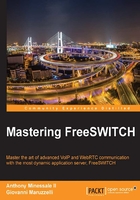
ITSPs – what they do
An Internet Telephony Service Provider brings to its customers SIP trunking connections that allow for outbound and inbound calls to/from the Public Switched Telephone Network (PSTN), to/from the Public Land Mobile Network (PLMN), and to/from other SIP users.
ITSPs don't need to own a physical Internet backbone, nor the "last mile" of cables going from the backbone to their customers' premises. ITSPs connect to the public Internet and operate their own SIP servers and (optionally) their own gateways from SIP to PSTN (from now on we'll write only PSTN, for brevity's sake, meaning both PSTN and PLMN).
ITSP business is to sell minutes of PSTN communication to their SIP end users: Both communication coming from PSTN (a caller from PSTN wants to reach a number connected to the SIP device of an ITSP's customer) and communication going to PSTN (ITSP's customer from his/her SIP device wants to call a number connected to the PSTN).
In the real world, much SIP to SIP communication passes through PSTN: ITSPs' customers still call phone numbers (for example, +12125551212, instead of SIP addresses like sip:alice@atlanta.example.com). Because there is no established way for mapping phone numbers to SIP addresses, even if phone numbers ultimately lead to a SIP device (for example, to a customer of a different ITSP) the call will be treated by the caller's ITSP as a PSTN-bound call. Barring an ITSP to ITSP direct peering (or federation), and barring both ITSPs (or end customers) participating in the same collective effort like e164.org (public ENUM directory resolving phone numbers to SIP servers), SIP communication between customers of different ITSPs will be routed through PSTN (they're just phone numbers):
SIP_caller_A=>ITSP_SIP_A=>PSTN_GW_A=>(((PSTN_CLOUD)))=>PSTN_GW_B=>ITSP_SIP_B=>SIP_callee_B
An ITSP needs to be aware of its customers connecting to its SIP servers, so as to allow users to make outbound calls, and to locate them when incoming calls are to be terminated to their devices: ITSPs must manage SIP registration of their customers. Some ITSPs manage registrations of all individual SIP devices of their customers, while other ITSPs register just the PBX server of their customers. Such servers will act as hubs for incoming/outgoing calls.
Those are all of the basic ITSP functions: Managing SIP registrations of customers, routing outbound SIP customers' calls to its own or third party-operated PSTN gateways, peers with other ITSPs that offer routes to other countries' PSTN gateways, routing incoming calls to its customers' SIP devices, optionally offering other ITSPs routing to its own PSTN gateways. A more or less complex operation and accounting system will allow for the management and billing of customers, and optionally for billing of peers.
Around this common core, each ITSP builds its own offering, adding features that allow customers to manage themselves through a web portal, to choose between various price points that balance cost against the quality of call routes, to query a least cost route (LCR) database, setup PBX features (voice mail, call transfers, follow me), conference services, local geographical numbers in various parts of the country or worldwide, fax inbound and outbound transmissions, text messaging gateways, automatic software integration (API) with services provisioning and management system, and so on.